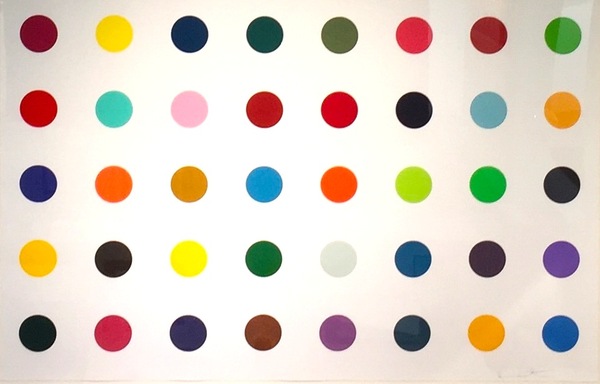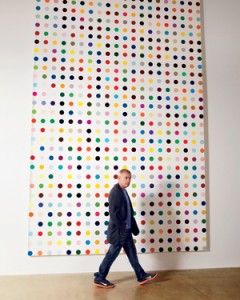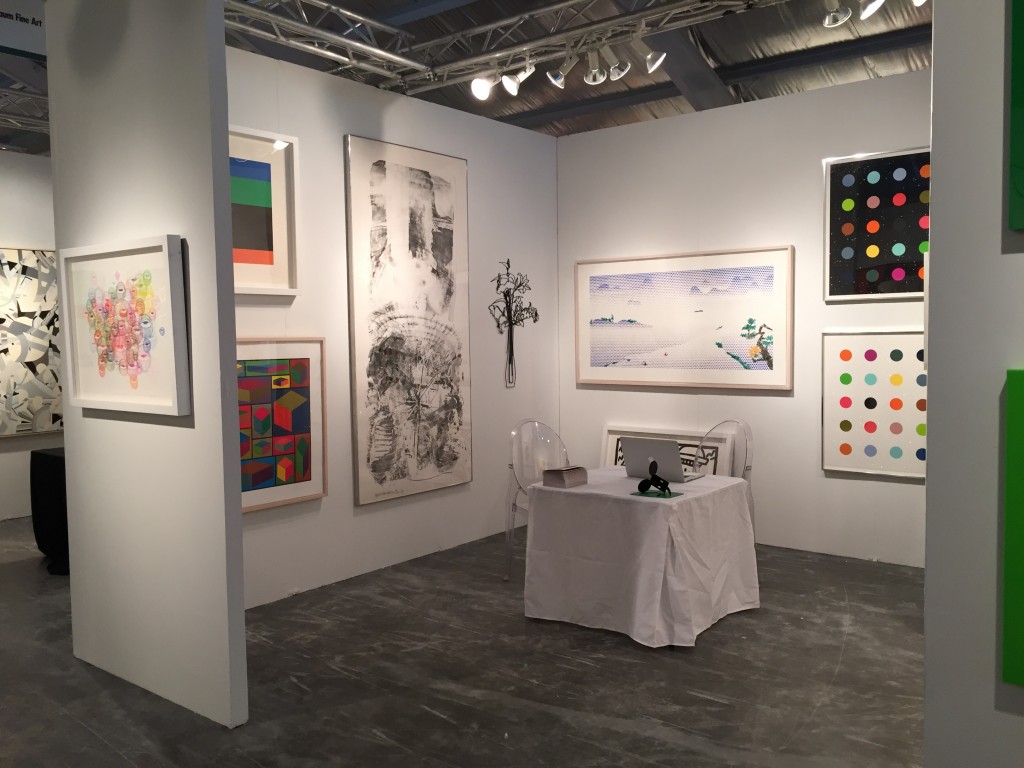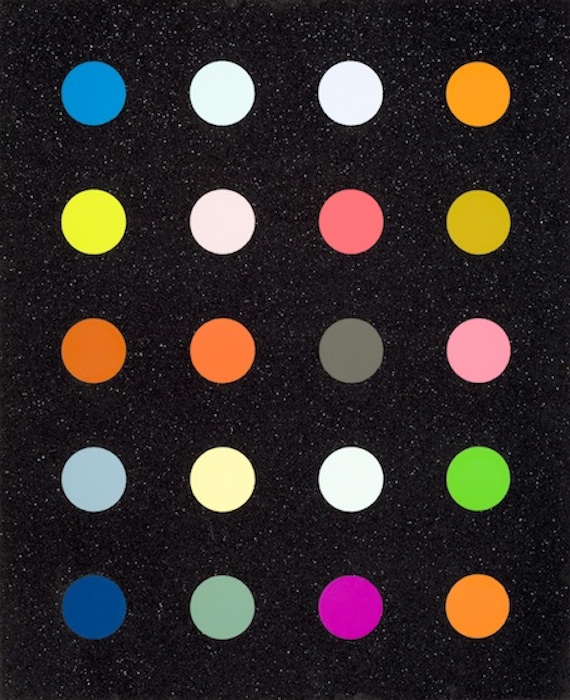

Damien Hirst
Mickey & Minnie
2016
Silkscreen and glitter
Available in the following sizes:
34 1/2 x 27 1/2 in. each
Edition of 150
60 x 48 1/4 in. each
Edition of 50
Pencil signed and numbered on verso
About the work:
Mickey and Minnie Mouse are probably the most iconic duo of Pop culture. Developed as the official mascot of the Walt Disney Company, in the 1920’s, Mickey’s celebrated status and universal appeal has inspired many artists to depict his likeness, very few however, have also created Minnie.
This week’s Work of the Week! WOW! are Mickey and Minnie by Damien Hirst.
The key defining factors of both Mickey and Minnie Mouse are the three circles that form their head and ears. It seems only fitting then, that the Walt Disney Company would approach Damien Hirst, widely known for his spot paintings, to create his own take on the beloved characters.
Hirst initially painted Mickey in household gloss on canvas in 2012, with a white background, auctioned at Christies to raise money for Kids Company, a children’s charity. The work sold for close to 1 Million Pounds and led to the creation of “blue glitter” Mickey and “pink glitter” Minnie.
Both figures are created solely by the use of circles, striking compositions reducing the mischievous mice to their basic elements, capturing their essence through shape and color. Even in their reductive states, Mickey and Minnie are such powerful icons that they remain highly identifiable and universally recognized. Mickey only required 12 spots and Minnie 19, attesting to the power of Hirst’s style and composition.
Both pieces are entirely covered in glitter which enhances the timeless star-power of the enduring and beloved personalities of Mickey and Minnie.

 Damein Hirst
Damein Hirst




